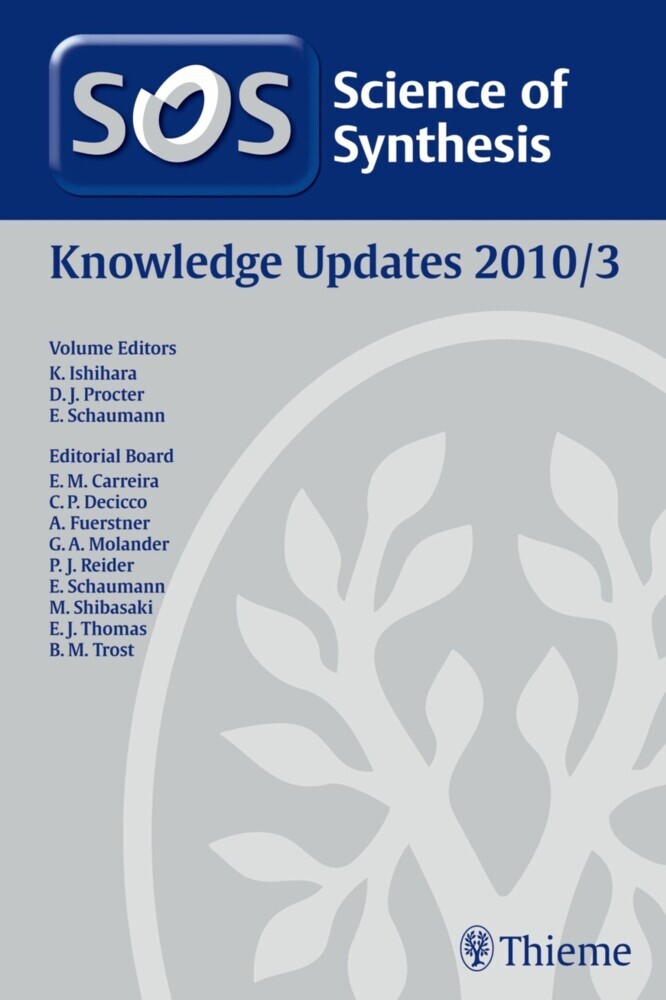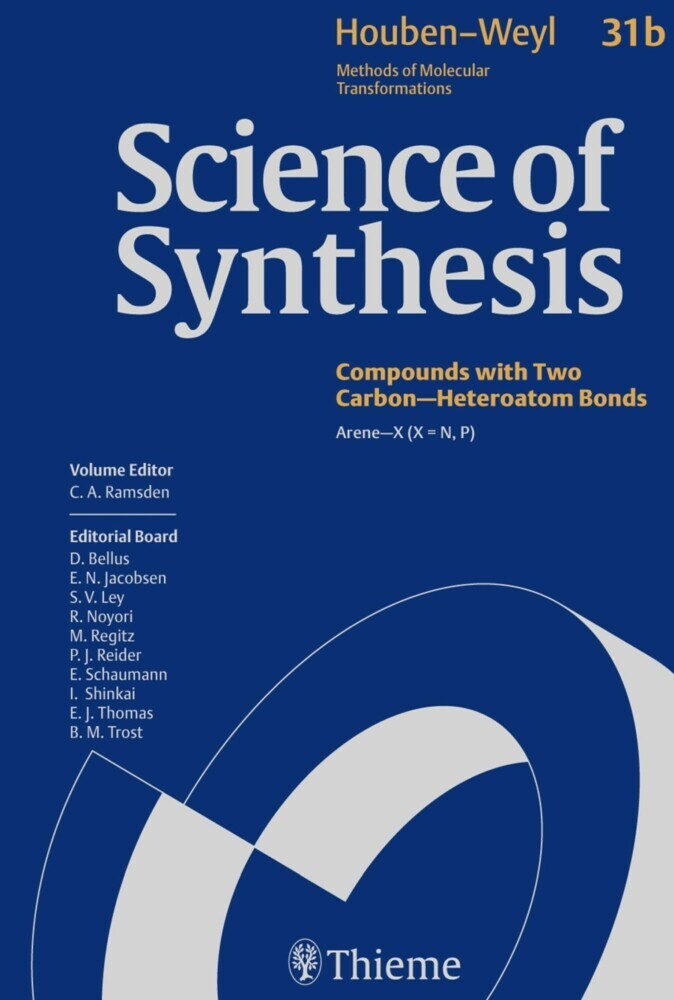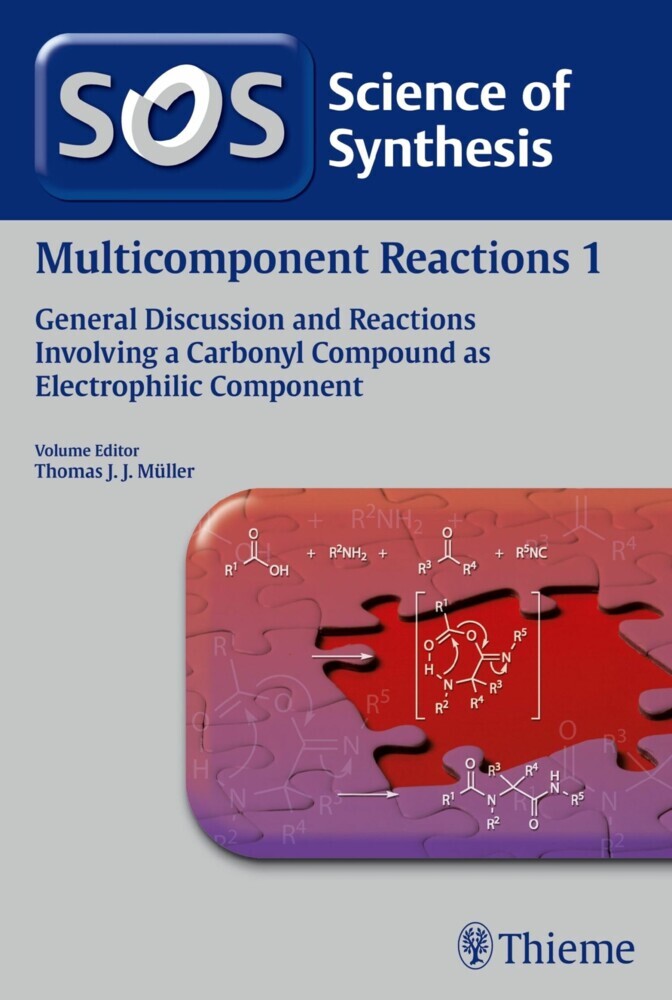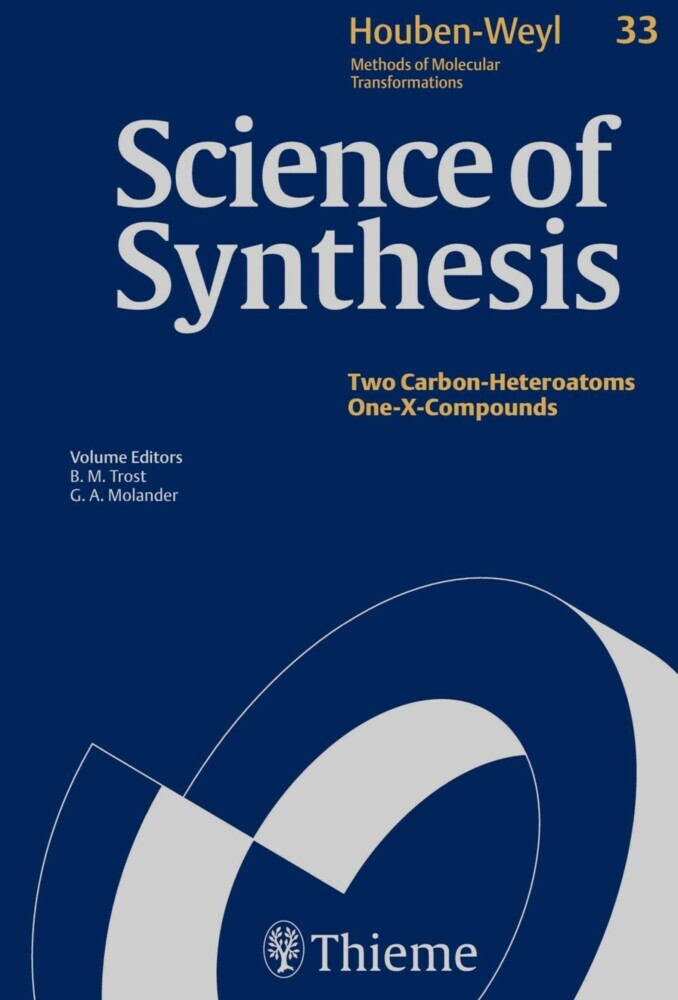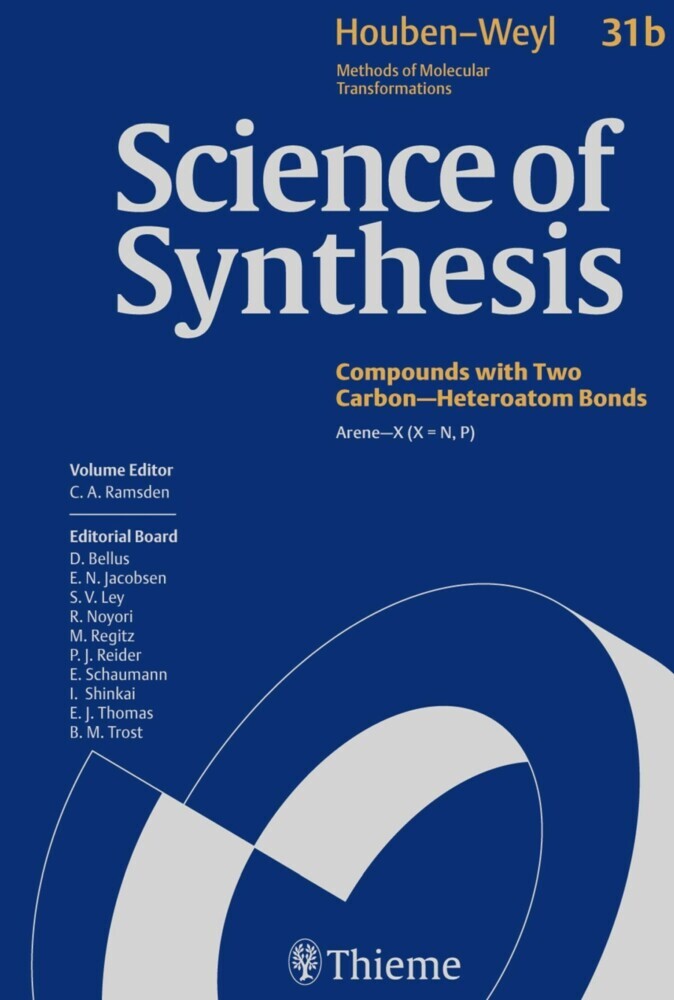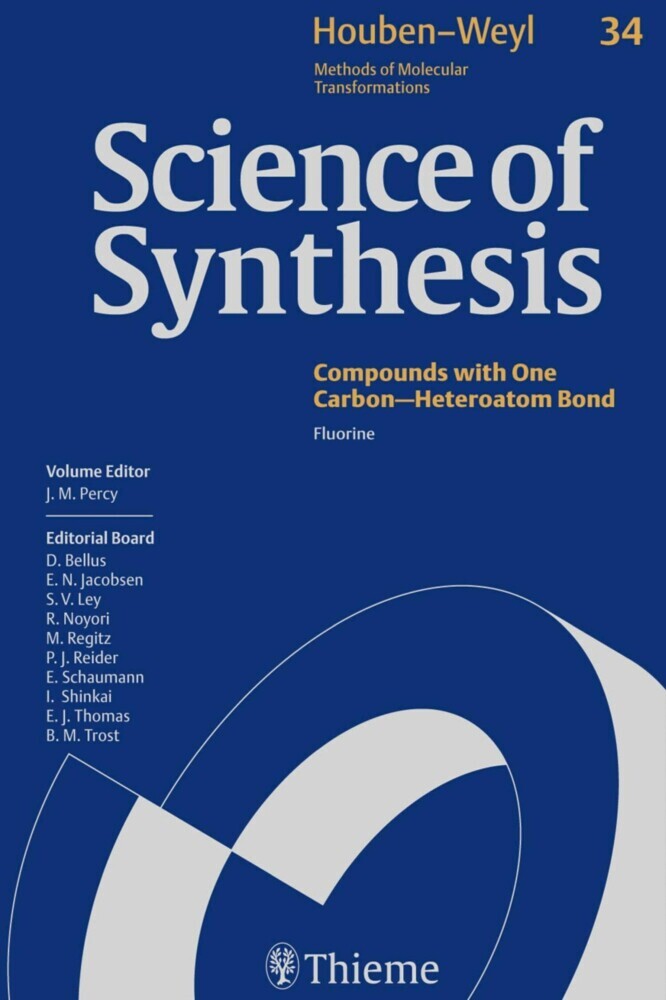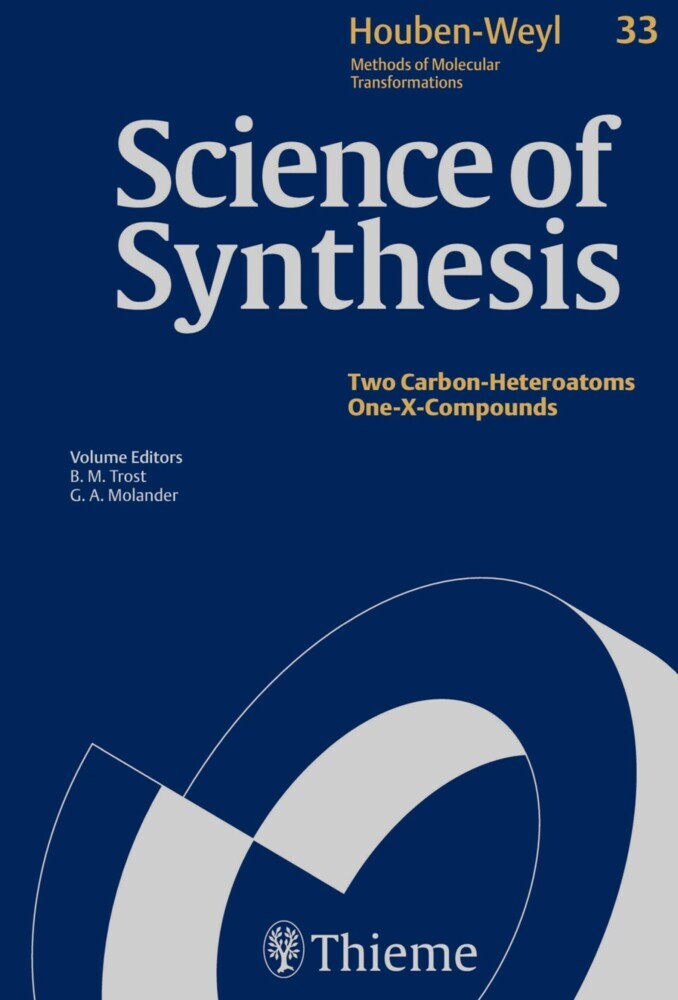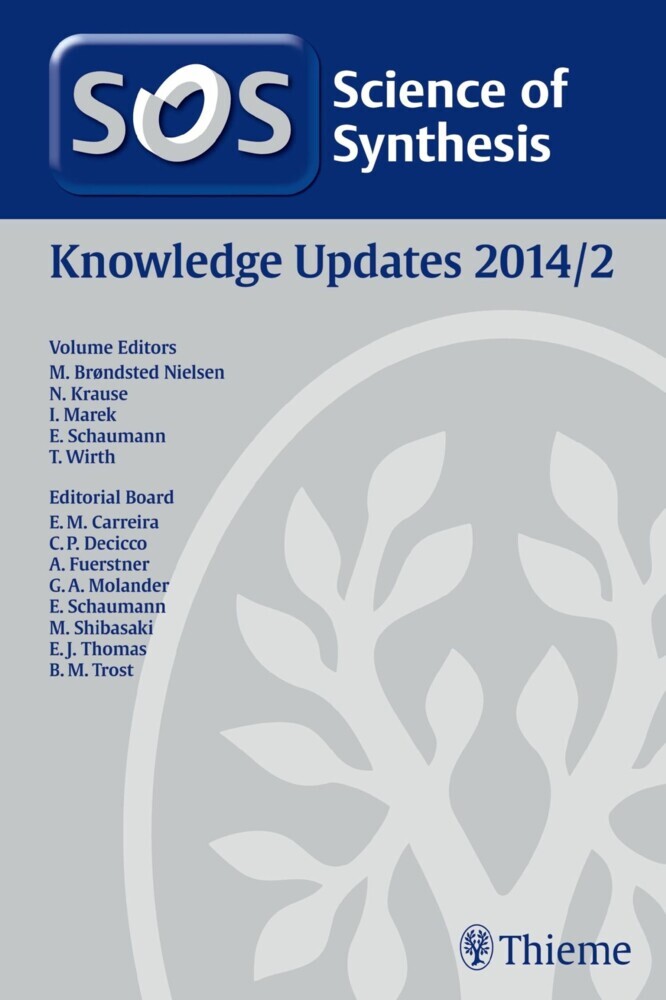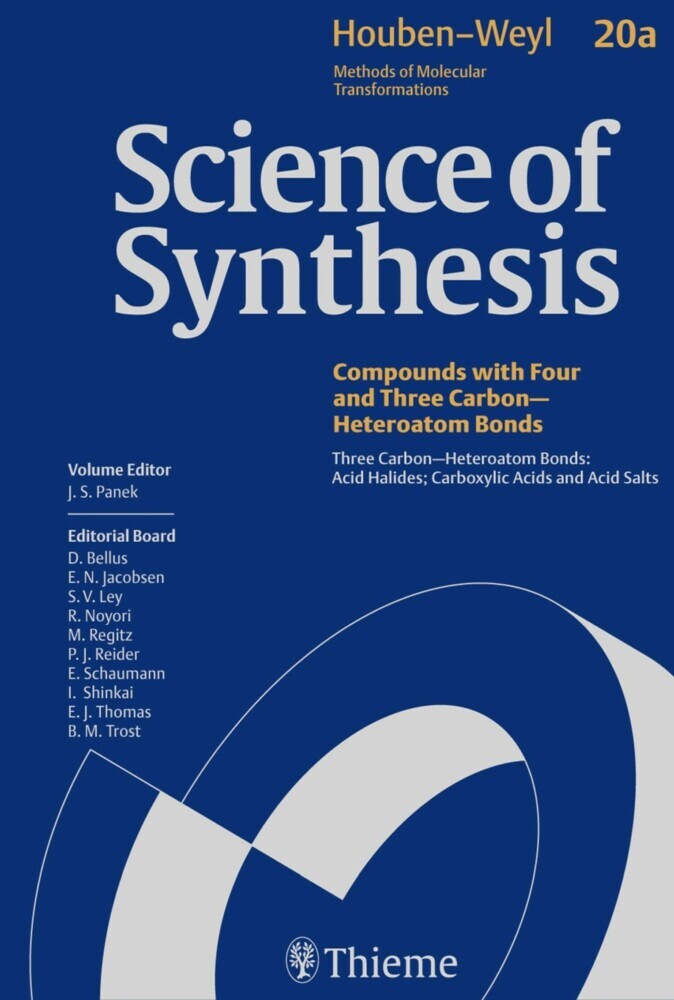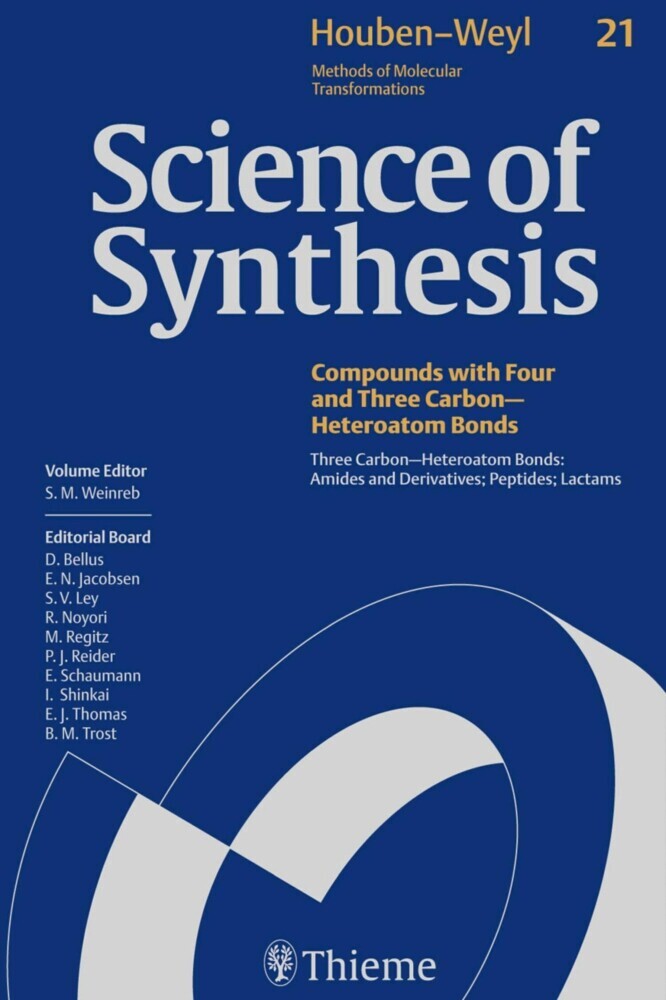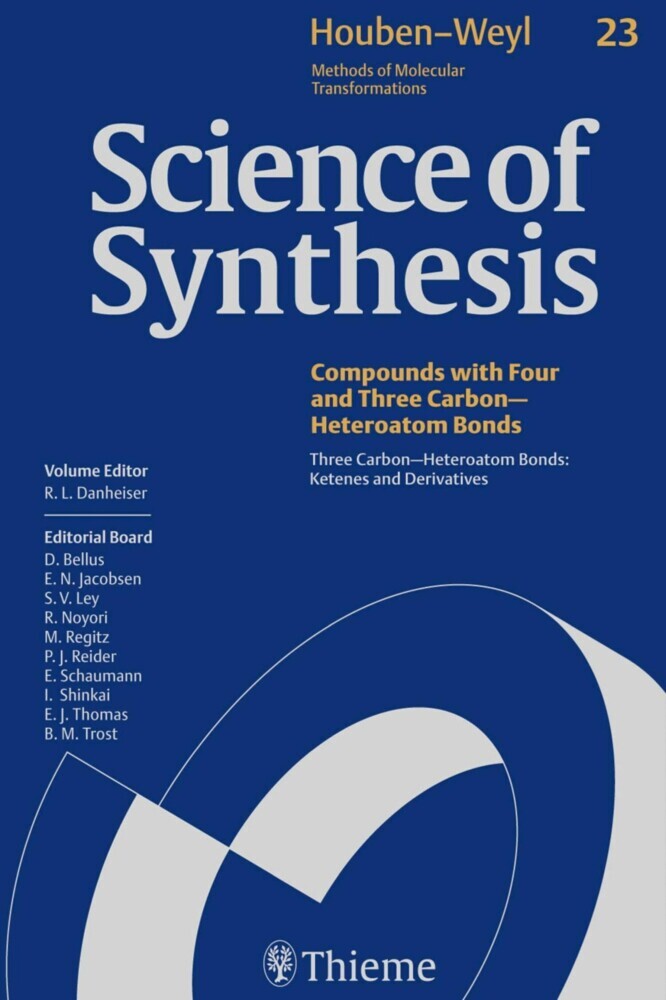Science of Synthesis Knowledge Updates 2010 Vol. 3. Vol.3
Science of Synthesis Knowledge Updates 2010 Vol. 3. Vol.3
The Science of Synthesis Editorial Board, together with the volume editors and authors, is constantly reviewing the whole field of synthetic organic chemistry as presented in Science of Synthesis and evaluating significant developments in synthetic methodology. Four annual volumes updating content across all categories ensure that you always have access to state-of-the-art synthetic methodology. // Content of this volume: Aryl Grignard Reagents, Magnesium Halides, Magnesium Halides, Magnesium Oxide, Alkoxides, and Carboxylates, Magnesium Amides, Oxazoles, Acyclic and Semicyclic O/O Acetals, 1,3-Dioxetanes and 1,3-Dioxolanes, Spiroketals, Glycosyl Oxygen Compounds (Di- and Oligosaccharides), Oligosaccharides, Acyclic Hemiacetals, Lactols, and Carbonyl Hydrates, Acyclic Hemiacetals, Lactols, and Carbonyl Hydrates. // The content of this e-book was originally published in December 2010.
1;Science of Synthesis: Knowledge Updates 2010/3;1
1;Science of Synthesis: Knowledge Updates 2010/3;1
1.1;Title page;5
1.2;Imprint;7
1.3;Preface;8
1.4;Abstracts;10
1.5;Overview;16
1.6;Table of Contents;18
1.7;Volume 7: Compounds of Groups 13 and 2 (Al, Ga, In, Tl, Be ··· Ba);28
1.7.1;7.6 Product Class 6: Magnesium Compounds;28
1.7.1.1;7.6.5.6 Aryl Grignard Reagents;28
1.7.1.1.1;7.6.5.6.1 Method 1: Synthesis by Reaction of Aryl Halides and Magnesium in the Presence of Lithium Chloride;28
1.7.1.1.2;7.6.5.6.2 Method 2: Synthesis by Halogen Magnesium Exchange with Alkyl Grignard Reagents;29
1.7.1.1.2.1;7.6.5.6.2.1 Variation 1: Synthesis by Halogen Magnesium Exchange with Lithium Triorganomagnesates;30
1.7.1.1.3;7.6.5.6.3 Method 3: Synthesis by Deprotonative ortho-Magnesiation;31
1.7.1.1.4;7.6.5.6.4 Method 4: Application to Synthesis of Biaryls by Dimerization;32
1.7.1.1.5;7.6.5.6.5 Method 5: Application to Synthesis of Amines;33
1.7.1.1.6;7.6.5.6.6 Method 6: Application to Addition to C--C Multiple Bonds Bearing a Directing Group;34
1.7.1.1.7;7.6.5.6.7 Method 7: Application to Transmetalations with Metal Halides;34
1.7.1.1.8;7.6.5.6.8 Method 8: Application to Addition to Carbonyl Compounds;35
1.7.1.1.8.1;7.6.5.6.8.1 Variation 1: Highly Efficient Addition of Lithium Triphenylmagnesate to Benzophenone;35
1.7.1.1.8.2;7.6.5.6.8.2 Variation 2: Zinc(II)-Catalyzed Addition of Aryl Grignard Reagents to Carbonyl Species;35
1.7.1.2;7.6.10.9 Alkyl Grignard Reagents;38
1.7.1.2.1;7.6.10.9.1 Method 1: Synthesis by Halogen Magnesium Exchange;38
1.7.1.2.1.1;7.6.10.9.1.1 Variation 1: Synthesis by Sulfoxide Magnesium Exchange;41
1.7.1.2.2;7.6.10.9.2 Method 2: Synthesis by Carbomagnesiation of C--C Multiple Bonds;42
1.7.1.2.3;7.6.10.9.3 Method 3: Application to Addition to Carbonyl Compounds;43
1.7.1.2.3.1;7.6.10.9.3.1 Variation 1: Highly Efficient Addition of Lithium Trialkylmagnesates to Acetophenone;43
1.7.1.2.3.2;7.6.10.9.3.2 Variation 2: Zinc(II)-Catalyzed Addition of Alkyl Grignard Reagents to Carbonyl Groups;44
1.7.1.3;7.6.12.13 Magnesium Halides;48
1.7.1.3.1;7.6.12.13.1 Method 1: Applications of Magnesium Fluoride;48
1.7.1.3.1.1;7.6.12.13.1.1 Variation 1: Magnesium Fluoride Catalyzed Knoevenagel Reactions;48
1.7.1.3.1.2;7.6.12.13.1.2 Variation 2: Magnesium Fluoride/Chiral Phosphoric Acid Catalyzed Friedel Crafts Reactions;49
1.7.1.3.2;7.6.12.13.2 Method 2: Applications of Magnesium Chloride as a Lewis Acid;49
1.7.1.3.2.1;7.6.12.13.2.1 Variation 1: Magnesium Chloride Promoted Claisen Reactions;50
1.7.1.3.2.2;7.6.12.13.2.2 Variation 2: Magnesium Chloride/Potassium Borohydride Promoted Reductions;50
1.7.1.3.3;7.6.12.13.3 Method 3: Applications of Other Magnesium Halides as Lewis Acids;51
1.7.1.3.3.1;7.6.12.13.3.1 Variation 1: Reaction of Organometallics in the Presence of Magnesium Bromide;51
1.7.1.3.3.2;7.6.12.13.3.2 Variation 2: Magnesium Halide Promoted Dipolar Cycloaddition Reactions;52
1.7.1.3.4;7.6.12.13.4 Method 4: Applications of Magnesium Halide/Base Systems to Enolate Formation and Subsequent Addition Reactions;52
1.7.1.3.5;7.6.12.13.5 Method 5: Applications of Magnesium Halides in Morita Baylis Hillman Reactions;53
1.7.1.3.6;7.6.12.13.6 Method 6: Applications of Magnesium Iodide in Ring-Expansion Reactions;55
1.7.1.4;7.6.13.17 Magnesium Oxide, Alkoxides, and Carboxylates;58
1.7.1.4.1;7.6.13.17.1 Method 1: Applications of Magnesium Oxide;58
1.7.1.4.2;7.6.13.17.2 Method 2: Applications of Magnesium Methoxide as a Base;59
1.7.1.4.3;7.6.13.17.3 Method 3: Applications of Magnesium Alkoxides to the Oppenauer Oxidation;60
1.7.1.4.4;7.6.13.17.4 Method 4: Applications of Magnesium Alkoxides in Diastereo- and Enantioselective Reactions;61
1.7.1.4.5;7.6.13.17.5 Method 5: Applications of Magnesium Alkoxides in Elimination Reactions;62
1.7.1.4.6;7.6.13.17.6 Method 6: Applications of Magnesium Carboxylates;64
1.7.1.4.7;7.6.13.17.7 Method 7: Applications of Magnesium Monoperoxyphthalate;65
1.7.1.5;7.6.14 Product Subclass 14: Magnesium Amides;68
1
Ishihara, Kazuaki
| ISBN | 9783131786715 |
|---|---|
| Artikelnummer | 9783131786715 |
| Medientyp | E-Book - ePUB |
| Copyrightjahr | 2014 |
| Verlag | Georg Thieme Verlag KG |
| Umfang | 550 Seiten |
| Sprache | Englisch |
| Kopierschutz | Digitales Wasserzeichen |

